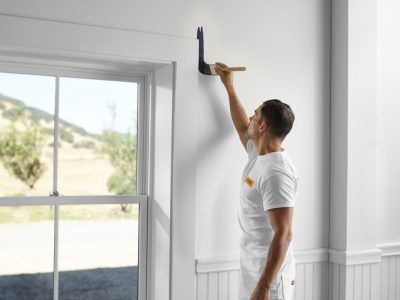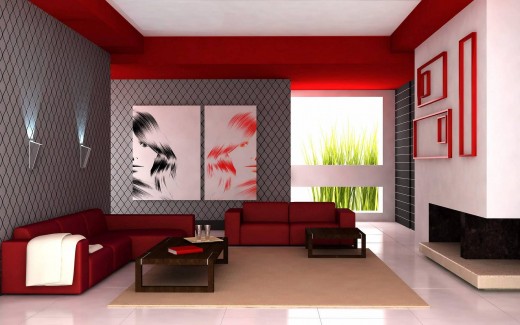Enhance Your Inside Design With Comprehensive Color Examination
The combination of shade assessment into interior decoration presents a distinct possibility to refine and boost the emotional and visual vibration of a space. By engaging with an experienced shade professional, you can navigate the complexities of color choice, making sure that your selections not just enhance architectural attributes yet additionally reverberate with individual design and mental impact. This strategic partnership can considerably influence the general environment of your atmosphere, cultivating a feeling of consistency and function. Recognizing the nuances of this process is essential-- what key aspects should be taken into consideration to attain optimal outcomes?
Advantages of Color Assessment

Additionally, shade assessment aids in maximizing natural light and enhancing spatial understanding. Lighter shades can make a space show up even more large, while darker tones create an intimate setting. Cleveland Metro Painting Specialists. This tactical application of color can dramatically affect the general setting of any kind of indoor room
Furthermore, specialist specialists have a comprehensive understanding of current trends and timeless standards, making sure that the picked shades will stay attractive in time. This foresight can save clients from costly redesigns in the future. Finally, color consultation empowers customers by giving them with a clear vision and instructions, promoting self-confidence in their design choices and inevitably bring about an extra gratifying and successful indoor design end result.
Comprehending Shade Psychology
The importance of shade psychology in interior decoration can not be overemphasized, as it explores the emotional and mental effects that numerous colors can stimulate in individuals. Shades can affect state of mind, habits, and even performance, making them a critical factor to consider in any style task.
For example, warm shades such as red, orange, and yellow are typically associated with energy and heat. They can stimulate sensations of exhilaration and convenience, making them ideal for social spaces like living kitchens or areas. Conversely, cool colors like blue, green, and purple tend to evoke calmness and serenity, making them suitable for rooms or meditation areas.
Additionally, making use of neutral tones can produce a balanced setting by permitting the bolder shades to stand apart without frustrating the detects. Understanding these psychological influences enables developers to develop areas that not just look visually pleasing but additionally promote psychological wellness.
Integrating color psychology right into interior decoration entails a thoughtful selection of tones tailored to the designated feature of each space, eventually enhancing the general experience for its owners. This awareness is vital for attaining a harmonious and useful indoor atmosphere.
The Shade Wheel Explained
Recognizing the relationships between hues is vital for effective interior style, and the shade wheel acts as a beneficial device in this procedure. The shade wheel, look here established by Isaac Newton in the 17th century, shows the range of colors set up in a round layout. It makes up primaries-- red, blue, and yellow-- that can not be produced by blending various other shades. Additional shades, formed by combining key shades, include environment-friendly, orange, and purple. Tertiary shades arise from mixing a key and a secondary shade, bring about hues such as green and red-orange.
The shade wheel aids designers grasp the partnerships between shades, including corresponding, analogous, and triadic plans. Complementary colors, located contrary each other on the wheel, create vivid contrasts that can energize a space. Similar colors, situated beside each other, offer a harmonious and cohesive look. Triadic schemes utilize 3 evenly spaced colors, providing balance and aesthetic passion.
Using the shade wheel in indoor design not only enhances visual allure but also stimulates certain feelings and ambiences, making it an essential referral for color consultation. Comprehending these connections inevitably equips developers to develop rooms that are both aesthetically fascinating and useful.
Choosing the Right Combination
Commonly, picking the right palette is a definitive aspect in accomplishing a successful interior decoration task. A well-chosen color design can combine a space, improve its attributes, and stimulate preferred emotions. To begin, consider the function of the room. Various spaces offer varied functions and call for schemes that mirror their intended use; as an example, relaxing shades such as soft blues or eco-friendlies function well in bedrooms, promoting leisure.
Next, take into consideration the natural light available. Light can significantly change just how shades appear, this website so it is important to evaluate the space at different times of the day. Additionally, consider existing architectural aspects and home furnishings. A harmonious scheme must match these attributes, creating a natural appearance throughout the room.
When selecting shades, use the 60-30-10 rule, which recommends that 60% of the space need to be a dominant shade, 30% an additional shade, and 10% an accent shade. This ratio makes sure balance and aesthetic interest (Cleveland Metro Painting Specialists). Sample shades on the walls before devoting, as this allows you to see just how the hues communicate with one an additional and the overall atmosphere they create in your indoor style task.
Collaborating With a Color Expert

When collaborating with a shade professional, the procedure typically starts with a first consultation. Throughout this conference, you'll review your vision, choices, and the existing aspects in your area. The expert will evaluate your requirements and may recommend specific shade schemes that line up with your goals.
After establishing a direction, the professional will certainly supply samples and visual aids to aid you picture the recommended color schemes. This action is critical, as shades can show up in different ways under varying lights problems.
Furthermore, a shade consultant can lead you in selecting corresponding furnishings, art work, and accessories to balance with your picked scheme. By working together closely, you can attain a polished visual that raises your interiors and develops an inviting atmosphere. Inevitably, the know-how of a color professional can dramatically improve the total effect of your design job.
Conclusion
In summary, detailed color examination offers as an important tool for improving interior layout. By leveraging specialist knowledge of color psychology and spatial dynamics, a customized color scheme can be developed to evoke particular emotions and produce an unified setting.
By involving with a seasoned shade professional, you can navigate the complexities of color selection, guaranteeing that your options not just enhance building features but also resonate with personal style and psychological impact. It comprises primary shades-- red, blue, and yellow-- that can not be developed by blending other colors.The color wheel helps designers understand the partnerships in between shades, consisting of complementary, comparable, and triadic plans.When choosing colors, use the 60-30-10 regulation, which recommends that 60% of the area must be a dominant color, 30% a secondary color, and 10% an accent shade. By leveraging professional expertise of shade psychology and spatial characteristics, a tailored color palette can be created to stimulate certain emotions and produce an unified setting.